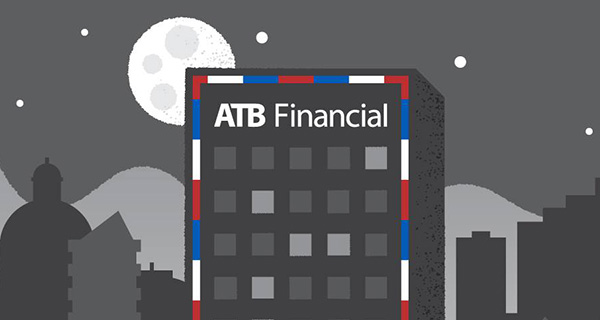 Would a cash-strapped government of Alberta sell its own bank?
Would a cash-strapped government of Alberta sell its own bank?
According to reports, Scotiabank has made an offer to purchase ATB Financial. And, given the perilous fiscal conditions in the province, it’s possible the government will sell.
That would be huge mistake.
By doing so, any government would have to betray rural Alberta and then wrestle with the ghost of William (Bible Bill) Aberhart. This bombastic former Alberta premier launched a radical 1930s political movement called Social Credit, dedicated to the public ownership of bank credit.
Why are rural Albertans so loyal to ATB?
Apart from the fact that ATB Financial is the only bank in many Alberta communities, the original Alberta Treasury Branches saved rural Alberta from bankruptcy in the Great Depression. As a result, there’s an almost mystical relationship between rural folk and ATB.
Many young people today have forgotten or don’t know that the Great Depression of the 1930s devastated Alberta.
According to historian James G. Macgregor, “In October 1929, the world’s train of prosperity jumped the track … by Christmas of ’29, Albertans began to feel the depression’s impact. Farm prices fell, unemployed walked the streets, something called a ‘scarcity of money’ – something ascribed to malign influences – cut purchasing power and paralyzed everyone’s will.
“The province (of Alberta) found that even ownership of its own resources was a hollow victory if nobody could develop them. With rich soil, which could grow almost unlimited wheat, forests which could produce enough lumber to house every Canadian family and miners with enough coal to heat all the continent, and with men eager to work these resources, the system could not put them to the tasks they wanted.”
What caused this credit crisis on the Prairies?
Financial panic. In the Depression, Canada’s Eastern banks (including the Bank of Nova Scotia, precursor of Scotiabank) essentially abandoned the Canadian West, leaving Albertans high and dry. (It happened again during the credit crisis caused by the introduction of the National Energy Program in the 1980s and again, profoundly, when energy industry investment collapsed in 2014. And don’t think it couldn’t happen again.)
Into this punishing credit void, Aberhart and his Social Credit government launched Alberta Treasury Branches, a publicly-owned bank that made loans to farmers and small businesses up and down the province, operating through the Alberta government’s Treasury Department.
Although ATB Financial has gone through a number of changes over the decades, it remains a powerful public banking institution that, organized properly, could use its considerable resources to advance the public good.
What could ATB do for Alberta?
For one, it can do what commercial banks do, create new monetary resources in the form of credit, and advance them into the economy based on present and future asset security.
For instance, a repurposed ATB could secure construction loans for affordable housing units by leveraging the housing assets themselves in ways commercial banks can’t or won’t do.
ATB might also issue $10,000 home energy retrofit financing to every household in Alberta. The money would come from newly-created credit derived from the resultant renewable energy assets and the valuable carbon offset credits.
A public bank like ATB might not charge interest on the retrofit loans, preferring to simply recover the loan principal from energy savings.
The Alberta government could also bring ATB Financial back into Treasury, reversing the Ralph Klein-era semi-privatization. As an integral agent of the Treasury Department, the bank’s asset base would be the asset base of the province. That would vastly increase the credit facilities of ATB.
In that case, what would be the best use of those credit resources?
One option is for ATB (perhaps rebranded as the Alberta Treasury Bank) to acquire Alberta’s outstanding debt (and other commercial paper) as it trades regularly in capital markets around the world.
Having acquired these outstanding obligations, the Alberta government would essentially own its debt and would have interest obligations only to itself.
Under these circumstances, the government of Alberta could grant itself interest and or principal holidays, whereby the province’s debt and bond repayments are reduced to a manageable schedule.
Or, better still, the province could do the obvious: simply cancel the debt and eliminate the problem.
The question isn’t why don’t we sell ATB Financial? It’s why would we not modernize our public accounts, use our financial strength and institutions to advance the public interest, eliminate the debt and – finally – allow Bible Bill’s ghost to sleep soundly?
Robert McGarvey is an economic historian and former managing director of Merlin Consulting, a London, U.K.-based consulting firm. Robert’s most recent book is Futuromics: A Guide to Thriving in Capitalism’s Third Wave.
Robert is a Troy Media Thought Leader. Why aren’t you?
For interview requests, click here. You must be a Troy Media Marketplace subscriber to access our Sourcebook.
The views, opinions and positions expressed by columnists and contributors are the author’s alone. They do not inherently or expressly reflect the views, opinions and/or positions of our publication.

